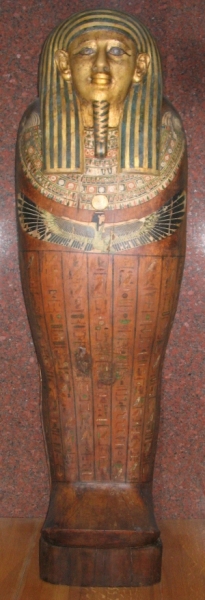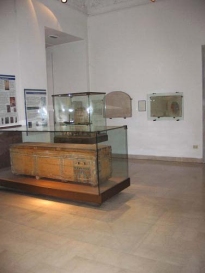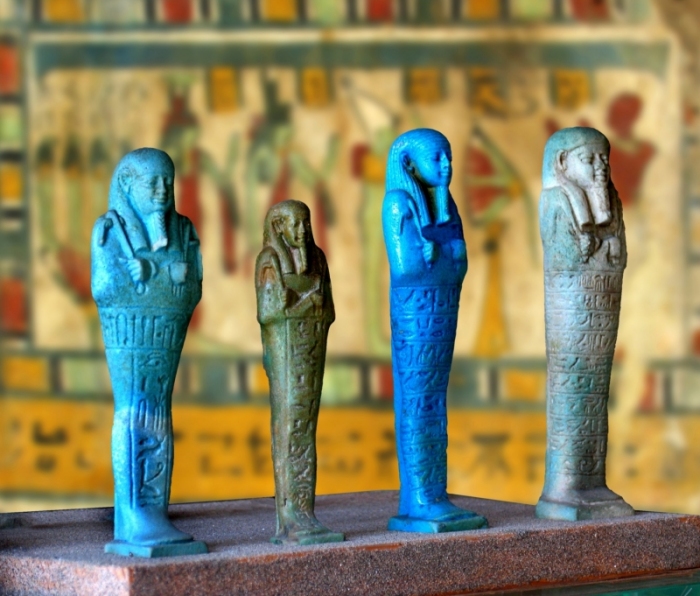 The
Egyptian collection in the National Archaeological Museum of Parma was created
as a consequence of the historic events between the XVIII and XIX centuries,
following the Napoleonic rule, and especially of the government of Parma by
Napoleonís wife, the Duchess Maria Luigia, who left a deep mark on the Museum,
which was directed by Michele Lopez. The Napoleonic campaign in Egypt was not
successful but it was in that circumstance that the Rosetta Stone was found: its
interpretation by Champollion fostered a series of archaeological expeditions to
Egypt, including two significant ones (in 1928 and 1929) led by Champollion
together with the Italian Archaeologist Ippolito Rossellini. This renewed
enthusiasm for Egyptian antiquities, the connection with the French court, the
renowned professional advices provided by Rossellini and the Duchessís support
to the Directorís choices, led to the acquisition of most of the items in the
current collection. The first acquisition, represented by some scarabs, dates
back to October 1828 while the most substantial group was formed between 1830
and 1832 when Lopez bought more than 40 items: a sarcophagus and an outer
covering, wooden and lithic stelae, papyri and several bronze and wooden
objects, a wooden anthropoid coffin (the sarcophagus Shepsesptah), three
sandstone stelae and a relief, two sycomore-wooden painted stelae.
The
Egyptian collection in the National Archaeological Museum of Parma was created
as a consequence of the historic events between the XVIII and XIX centuries,
following the Napoleonic rule, and especially of the government of Parma by
Napoleonís wife, the Duchess Maria Luigia, who left a deep mark on the Museum,
which was directed by Michele Lopez. The Napoleonic campaign in Egypt was not
successful but it was in that circumstance that the Rosetta Stone was found: its
interpretation by Champollion fostered a series of archaeological expeditions to
Egypt, including two significant ones (in 1928 and 1929) led by Champollion
together with the Italian Archaeologist Ippolito Rossellini. This renewed
enthusiasm for Egyptian antiquities, the connection with the French court, the
renowned professional advices provided by Rossellini and the Duchessís support
to the Directorís choices, led to the acquisition of most of the items in the
current collection. The first acquisition, represented by some scarabs, dates
back to October 1828 while the most substantial group was formed between 1830
and 1832 when Lopez bought more than 40 items: a sarcophagus and an outer
covering, wooden and lithic stelae, papyri and several bronze and wooden
objects, a wooden anthropoid coffin (the sarcophagus Shepsesptah), three
sandstone stelae and a relief, two sycomore-wooden painted stelae.
In 1885 two remarkable pieces entered the collection: a sarcophagus and its
mummy. Nothing has entered the collection after this date. The present
arrangement was supervised by Giovanni Botti in 1965. Now you can see in the
museum: funerary papyri, funerary necklaces, amulets, heart scarabs, funerary
stone and painted wooden stelae, a wooden rectangular coffin belonging to the
XII Dynasty, two anthropomorphic sarcophagi, one belonging to the XXVI Dynasty
and the other containing its mummy and some Canopic jars of the Ptolemaic
period.

